How ABA Therapy Supports School Readiness for Young Children
August 1, 2025
Empowering Early Success through ABA Therapy

Setting the Foundation for School Success
Young children with autism often face unique challenges that can affect their readiness for school. Addressing social, communication, and behavioral hurdles early on is crucial for a smooth transition into the classroom. Applied Behavior Analysis (ABA) therapy offers a structured, evidence-based approach tailored to individual needs, promoting skill development that underpins academic and social success.
Core Principles of ABA and Its Application in School Readiness
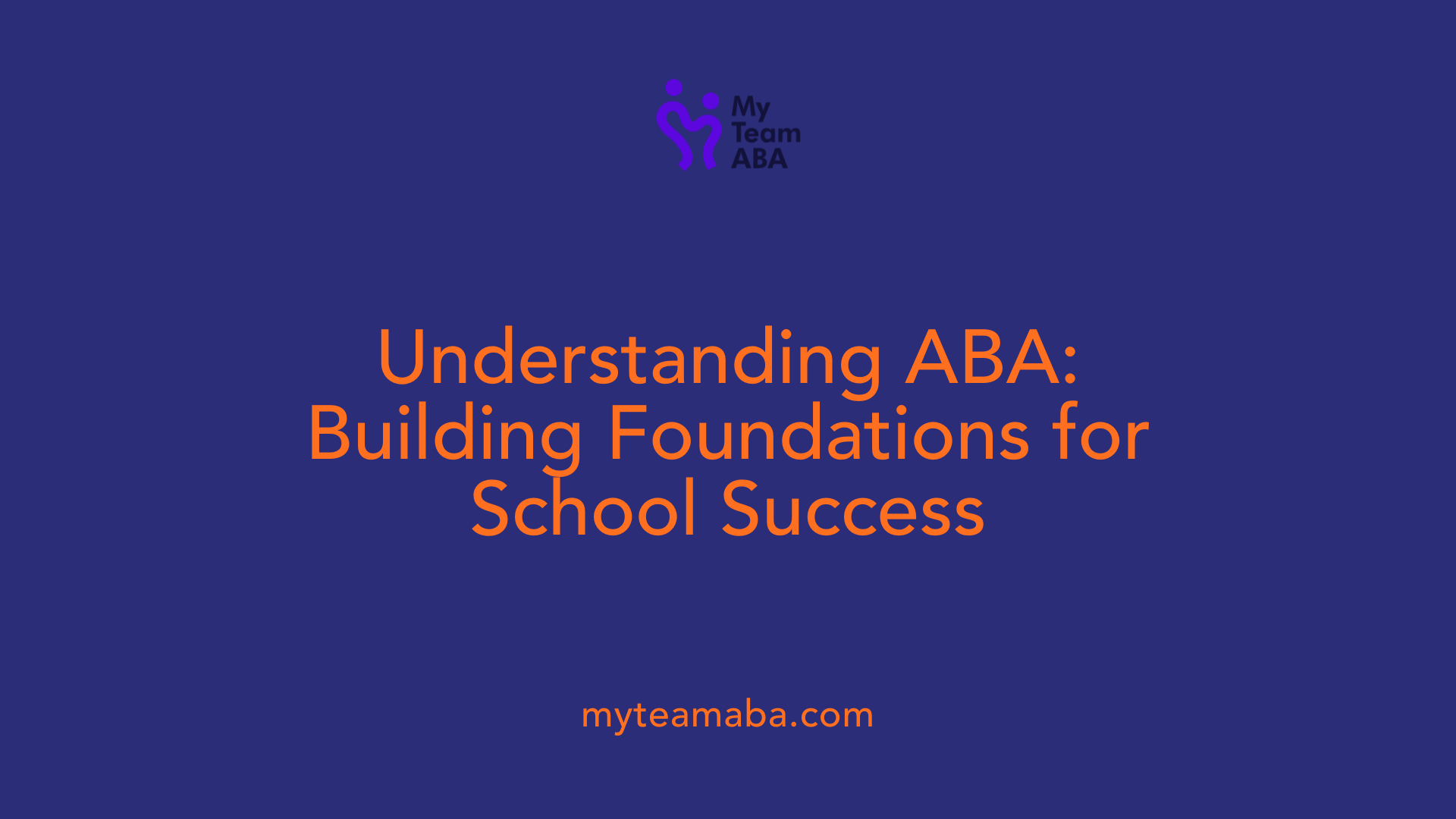
How does autism affect a child's preparedness for school?
Children with autism often face unique challenges that influence how well they are prepared to enter a school setting. These challenges can include difficulties with social skills, communication, and managing emotions. Unlike their peers, children with autism may struggle with understanding social cues, sharing, taking turns, or initiating conversations.
Sensory processing differences and working memory limitations can also make it hard for them to adapt to routines and follow multi-step instructions. Additionally, emotional regulation issues may lead to increased anxiety or outbursts, making classroom transitions more difficult.
However, early interventions like ABA therapy can significantly improve their readiness. This therapy targets developing communication, social skills, self-help abilities, and self-regulation, preparing children to participate more fully and confidently in school activities. Collaborative efforts with families and educators help tailor support, ensuring smoother transitions and better educational outcomes.
Behavior as observable and measurable
A core idea in ABA is that behaviors are observable and measurable. Therapists carefully watch how children respond to different situations, counting and recording specific actions.
This evidence-based approach helps identify patterns in behavior and what triggers certain responses. For example, a therapist might note that a child's tantrum occurs when presented with a difficult task or sensory overload. Recognizing these patterns allows for targeted interventions, aiming to reduce disruptive behaviors and promote positive ones.
Data-driven decision making
All ABA strategies rely on collecting detailed data about a child's progress. This data-driven approach ensures that interventions are tailored and effective. Therapists and educators regularly record how often behaviors occur, the context, and the child's response to different techniques.
Based on this information, they adjust goals and strategies to better support the child's development. This ongoing process helps maximize the child's growth in areas like communication, social skills, and academic readiness.
Understanding behavior through the ABCs (Antecedent, Behavior, Consequence)
A fundamental concept in ABA is analyzing behaviors through the ABCs:
- Antecedent: What happens right before a behavior occurs?
- Behavior: The action or response of the child.
- Consequence: What follows the behavior?
By understanding these components, therapists can identify triggers that lead to challenging behaviors and develop strategies to modify them. For example, if a child acts out after a loud noise (antecedent), the therapist might introduce noise-canceling headphones or prepare the child for expected sounds. Reinforcing positive behaviors and providing alternatives through structured routines help children learn appropriate responses.
These principles form the backbone of ABA, enabling precise, effective support for children with autism to grow skills vital for school success and enhance their overall well-being.
| Principle | Description | Application Example |
|---|---|---|
| Behavior as observable & measurable | Behaviors can be seen and counted | Tracking how often a child shares |
| Data-driven decision making | Using data to guide interventions | Adjusting goals based on progress |
| ABCs (Antecedent, Behavior, Consequence) | Analyzing behavior by its triggers and responses | Modifying routines to prevent outbursts |
By applying these core principles, ABA therapy helps children develop essential skills for school, manage behaviors effectively, and build confidence for lifelong success.
Building the Foundation: Skills Taught Through ABA for School Readiness
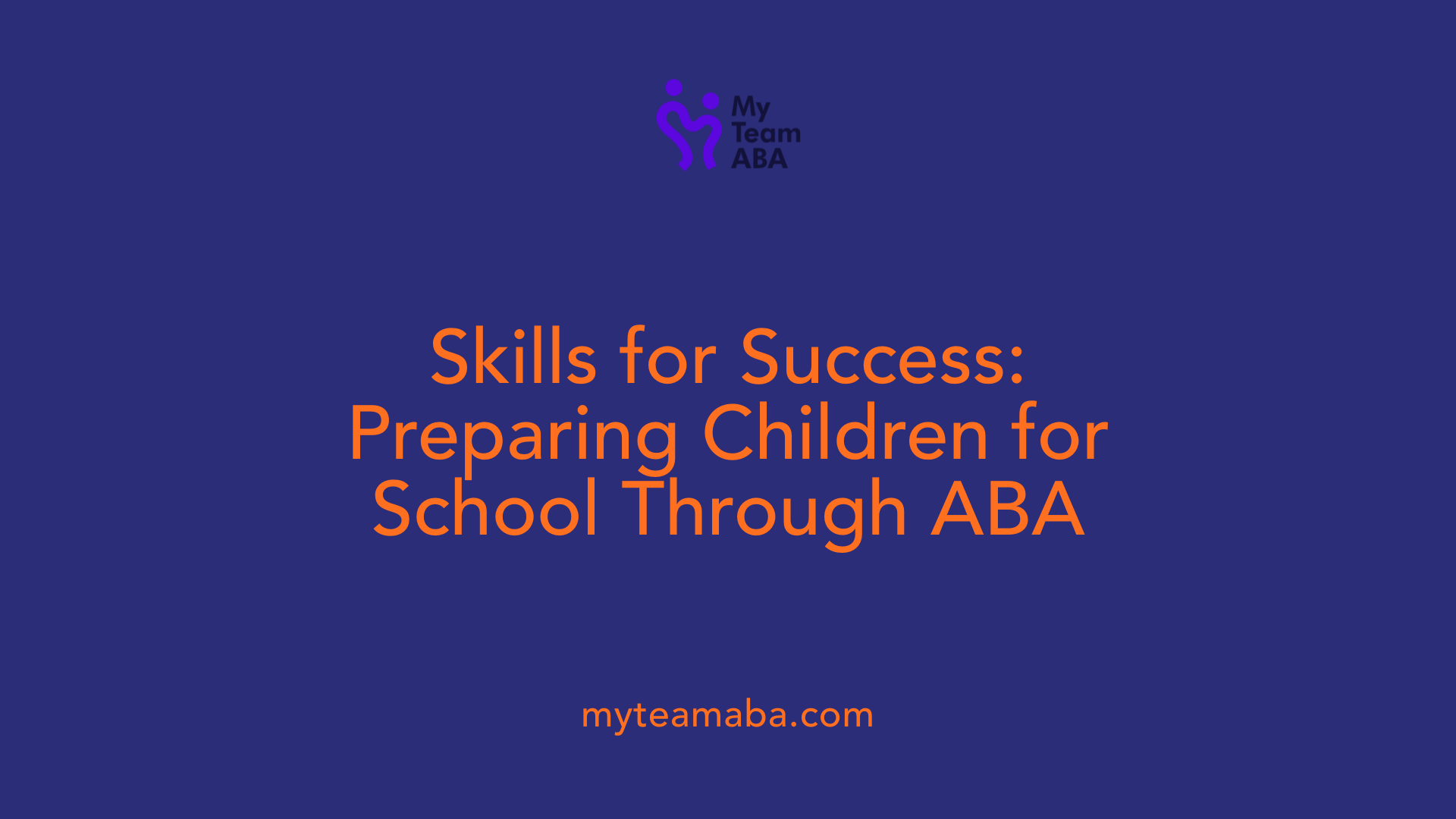 'Building the Foundation: Skills Taught Through ABA for School Readiness'
'Building the Foundation: Skills Taught Through ABA for School Readiness'
ABA therapy is a proven approach that prepares children with autism for successful school experiences. One of its main goals is to develop skills that promote independence, confidence, and social integration.
A core aspect of ABA in school readiness involves teaching social abilities. Children learn vital skills such as sharing, taking turns, understanding social cues, and cooperative play. These abilities help them navigate classroom interactions and foster friendships.
Communication skills are also a focus. Through structured activities, children improve both verbal and nonverbal communication, enabling them to express needs, follow instructions, and understand their peers and teachers. Visual supports like social stories and cues are often used to reinforce understanding.
Self-regulation techniques are taught to help children manage emotions and behaviors, which are crucial for adapting to new routines and reducing anxiety at school. These strategies include visual schedules, timers, and positive reinforcement to support emotional resilience.
Pre-academic skills such as recognizing colors, numbers, and letters are systematically introduced. ABA therapy breaks down these concepts into manageable steps, fostering attention and task completion.
Adaptive skills also form a fundamental part of school readiness. Children learn to organize personal belongings and follow daily routines, promoting independence in classroom settings.
Therapists design activities that imitate the typical school day, including check-ins, group activities, movement breaks, art, and classroom simulations. These routines help children transition smoothly from home to school.
By integrating these skills through tailored interventions, ABA therapy effectively supports children in their journey toward becoming confident, independent learners. It ensures that they are equipped with the necessary tools to succeed academically, socially, and emotionally in the school environment.
Overall, ABA therapy plays a critical role in fostering the essential skills for school success—making the transition to school smoother and setting children up for long-term achievement.
If you are seeking more details on skills taught in ABA for school success, consider searching with phrases like 'Skills taught in ABA for school success' to find comprehensive resources and examples.
Utilizing Practical Strategies for Smooth Transitions and Routine Management
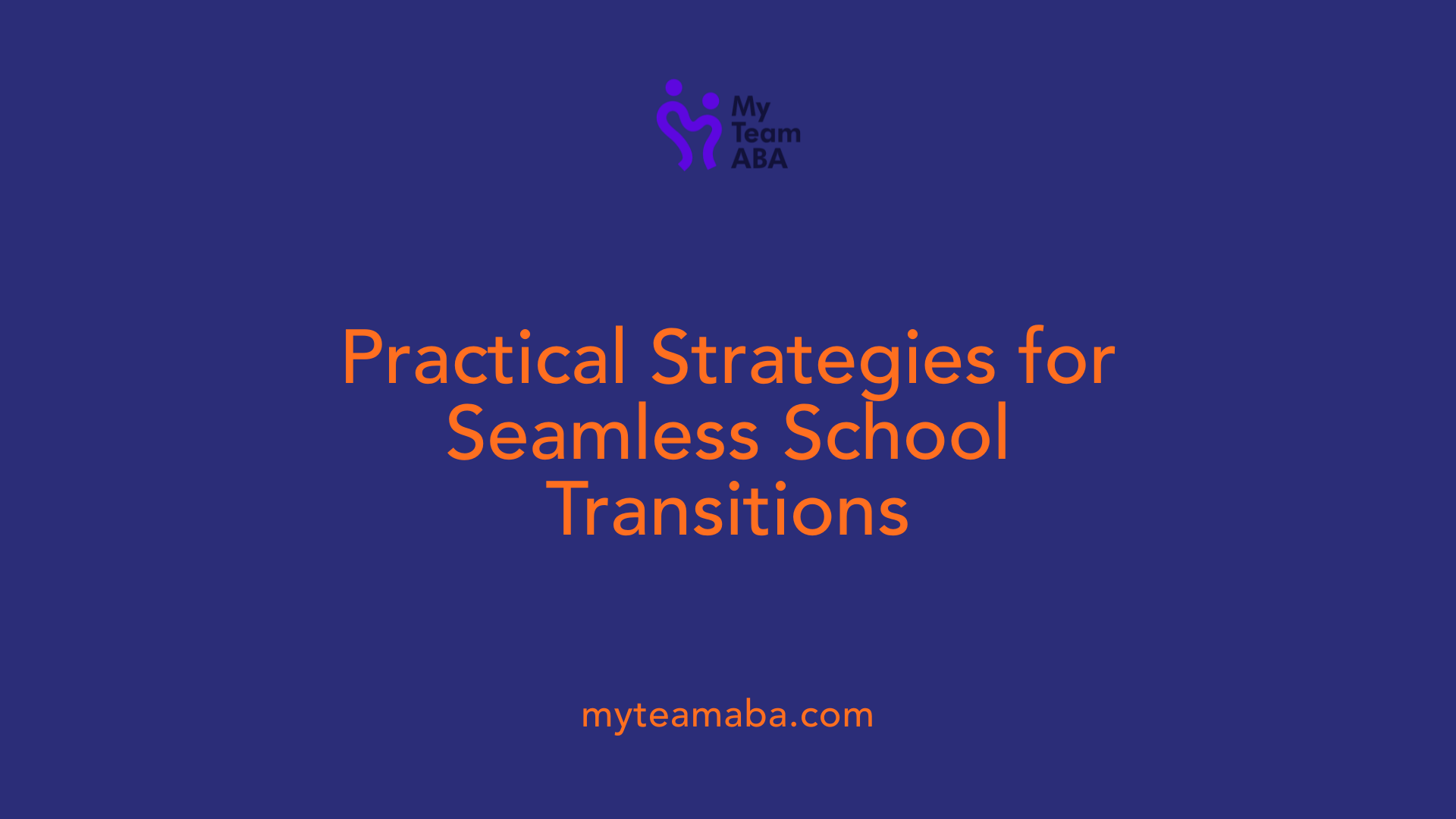
What are the strategies used in ABA therapy to prepare children with autism for school?
ABA therapy employs a variety of approaches to prepare children with autism for the school environment, focusing on developing independence, social skills, communication, and self-regulation.
One of the main methods involves breaking down complex skills into smaller, manageable steps. This process, called task analysis, allows children to learn skills gradually, building confidence and competence.
Visual supports such as schedules, social stories, and timers play a critical role. Visual schedules help children understand daily routines and classroom expectations, reducing anxiety and fostering independence. Social stories teach appropriate social behaviors through step-by-step narratives, preparing children for social interactions.
Another vital strategy is the use of functional communication methods like Functional Communication Training (FCT). FCT teaches children alternative ways to express needs and wants, reducing frustration and disruptive behaviors.
Reinforcement techniques are crucial in ABA and include positive reinforcement—offering praise, rewards, or access to preferred activities—to increase desired behaviors. Prompting and fading are used to guide children through new skills, gradually reducing assistance as competence increases.
In addition to individualized skill-building, ABA therapy incorporates school-like activities and routines to mimic the classroom environment. This includes simulated group activities, movement breaks, and structured routines that prepare children for the transition from therapy to school settings.
Collaboration with families and educators is essential. Consistent strategies across home and school environments reinforce learned skills, making the transition smoother and more effective.
An example table summarizes some of these strategies:
| Strategy | Description | Example |
|---|---|---|
| Visual supports | Use of pictures, schedules, and social stories | Visual daily routines |
| Social stories and role-playing | Teaching social behaviors through stories and practice | Role-playing classroom interactions |
| Functional communication methods | Teaching children to communicate needs effectively | Using gesture, PECS, or speech |
| Reinforcement techniques | Encouraging desired behaviors through rewards | Praise for following directions |
| Collaboration efforts | Working with families and schools for consistency | Regular meetings with teachers |
Through these combined strategies, ABA therapy aims to develop functional skills that promote successful school experiences, ensuring children are prepared academically, socially, and behaviorally for their educational journey.
Impact of ABA on Emotional Regulation and Behavior Management
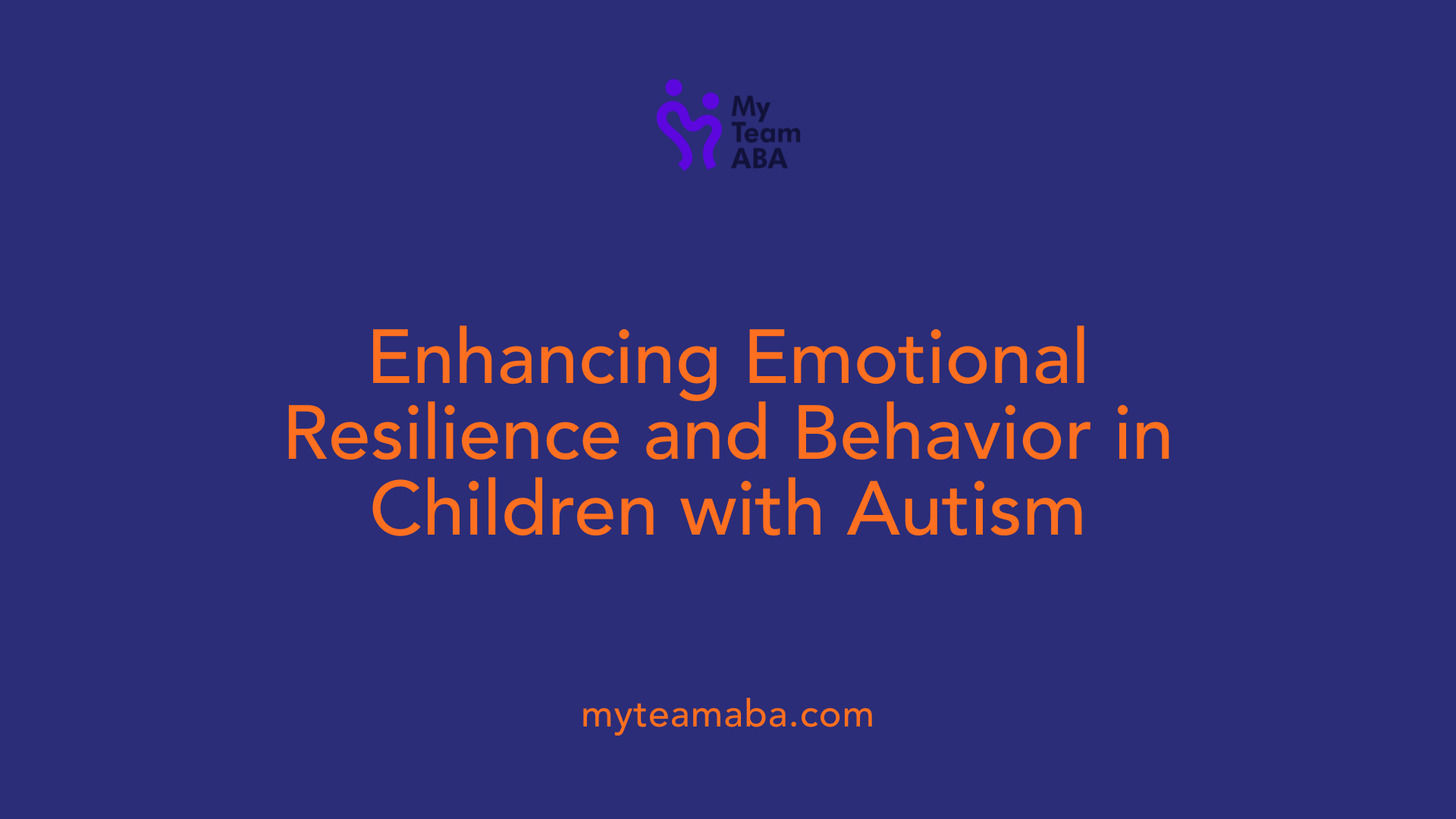
How does autism affect a child's preparedness for school?
Children with autism often face significant hurdles that can impact their readiness for school. Challenges such as difficulties with social interactions, communication, and emotional regulation are common. These children might struggle with social skills like sharing, taking turns, and understanding social cues, which are vital for classroom cooperation.
Sensory processing differences, memory issues, and difficulties in self-regulation can make adapting to the structured school environment more complex. Typically, they might have trouble managing emotions and behaviors during transitions or in unfamiliar situations, affecting their ability to participate fully.
Early intervention through ABA therapy targets these areas, aiming to build crucial skills for school success. Programs designed around communication, social skills, and self-help strategies help children improve their engagement and relationships with peers and teachers. Tailored support and collaboration between families, therapists, and educators are essential to foster a smoother transition and positive educational experiences.
Managing emotions using visual supports and self-regulation techniques
ABA therapy employs visual schedules, timers, and cues that help children recognize and manage their emotions effectively. These tools provide predictable routines, reducing anxiety and increasing confidence.
Self-regulation techniques, including calming strategies and self-monitoring, enable children to control their reactions, stay focused, and transition smoothly between activities. Reinforcing these skills enhances their emotional resilience and promotes positive interactions.
Addressing behavioral challenges and problematic behaviors
Understanding the roots of challenging behaviors allows ABA therapists to develop effective interventions. Whether behaviors stem from communication barriers or sensory overload, targeted strategies like functional communication training help children express needs appropriately.
Positive reinforcement and behavior shaping are vital in encouraging desirable behaviors. By consistently rewarding progress, children learn alternative responses to frustrations or disruptions, leading to improved behavior at school.
Positive reinforcement and behavior shaping techniques
Using praise, rewards, and structured feedback, ABA therapists guide children toward successful behaviors. Behavior shaping gradually introduces new skills, from simple tasks like following instructions to complex social interactions.
These techniques help replace problematic behaviors with functional, socially acceptable responses, making children more comfortable and capable in the classroom.
Promoting emotional resilience and social interactions
ABA therapy fosters emotional resilience by teaching children to recognize emotions in themselves and others. Visual supports, social stories, and role-playing improve their ability to empathize, problem-solve, and navigate social situations.
Enhancing emotional and social skills encourages friendships and cooperative play, essential components of a positive school experience. Learning to manage emotions and behavior independently builds confidence, independence, and overall success.
| Aspect | Strategy | Purpose | Example |
|---|---|---|---|
| Emotional regulation | Visual supports | Reduce anxiety | Using visual cues to show expected responses during transitions |
| Behavior management | Positive reinforcement | Encourage desired behaviors | Praising a child for sharing during group activity |
| Self-regulation | Calming techniques | Manage emotions | Deep breathing or calming corner activities |
| Social skills development | Role-playing | Practice social cues | Simulating classroom interactions |
This comprehensive approach ensures children develop the emotional and behavioral competencies necessary for thriving academically and socially in school settings.
Fostering Independence and Adaptive Skills Through ABA
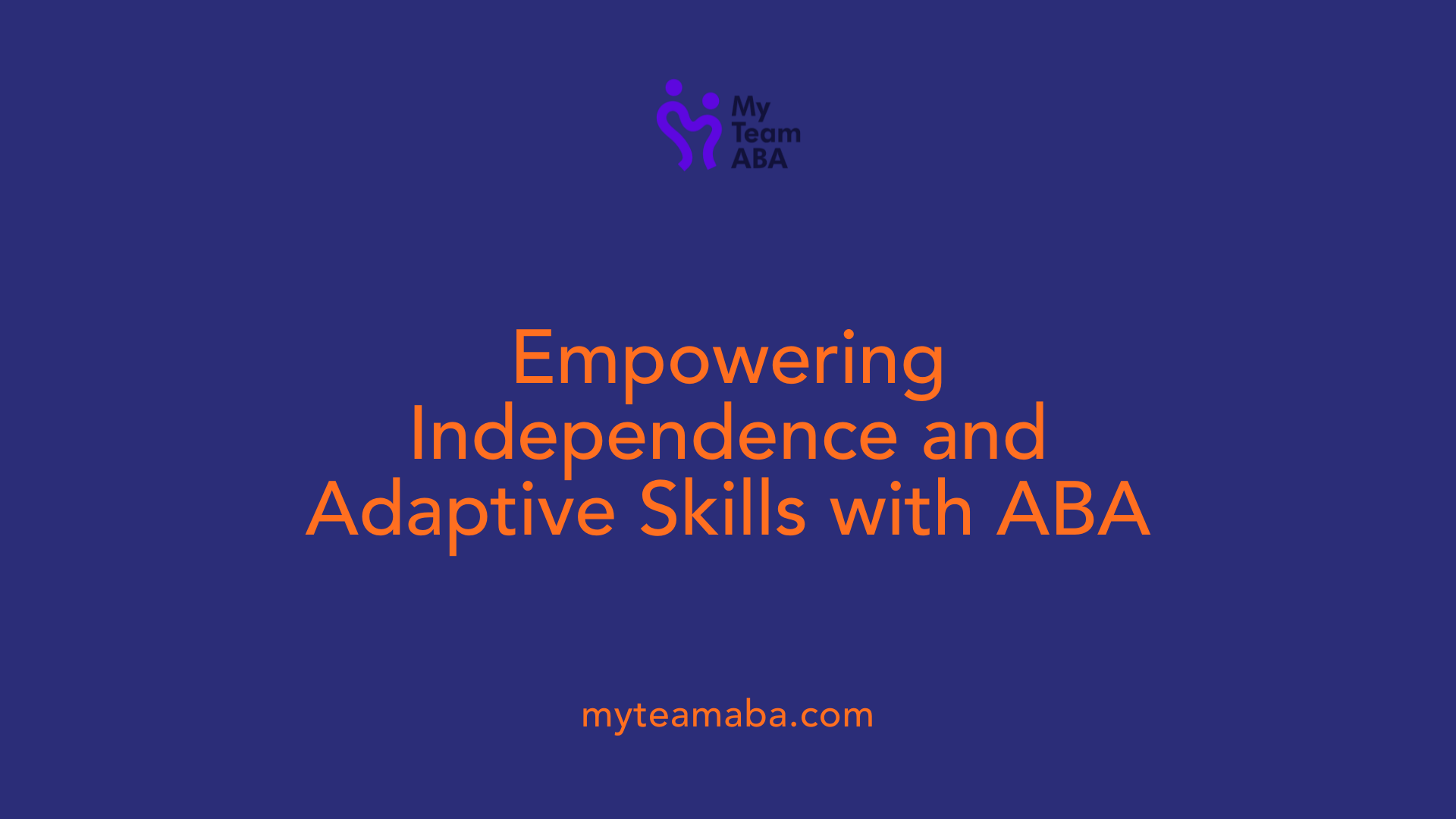
How does ABA therapy support school readiness in children with autism?
ABA therapy plays a crucial role in preparing children with autism for school success by focusing on developing a wide range of skills essential for navigating the classroom environment. It teaches children social skills like sharing, taking turns, and engaging in group activities, which are vital for positive peer interactions. Communication skills are strengthened through structured activities that promote receptive and expressive language, helping children understand instructions and express their needs effectively.
Behavioral management is an important aspect of ABA, addressing challenging behaviors by understanding their causes and teaching appropriate responses. This creates a more conducive learning environment and improves overall classroom behavior.
ABA programs incorporate routine-based teaching, using visual supports, timers, and social stories to help children understand and adapt to classroom routines. These strategies facilitate smooth transitions, minimize anxiety, and foster confidence.
Furthermore, ABA promotes pre-academic skills such as recognizing colors, numbers, and letters, along with attention and focus, which form the foundation for learning. The therapy also emphasizes self-help and independence skills like managing personal belongings, using the restroom, and following daily routines.
By integrating these skills into play-based activities and real-life simulations, ABA therapy ensures children develop the independence and resilience needed for school. It also fosters emotional regulation, enabling children to manage their emotions and behaviors independently.
Overall, ABA supports school readiness by developing communication, social, self-regulation, and academic skills. It encourages problem-solving and adaptive behaviors, helping children confidently transition into the school setting and thrive academically and socially.
How can ABA therapy teach and reinforce independence and adaptive skills?
ABA therapy uses targeted activities and strategies to teach children practical self-help skills. For example, children learn to use the restroom independently, manage personal belongings, and complete daily routines without assistance. Visual schedules and checklists help children understand what to do next, creating predictability and reducing anxiety.
Task independence is encouraged through breaking down complex activities into manageable steps and reinforcing successful completion. This approach builds confidence and encourages children to become more autonomous.
Problem-solving skills are cultivated by guiding children through situations that require thinking and decision-making, often through structured play and social interactions. These skills are vital for handling unexpected or challenging scenarios in school.
By consistently practicing these skills across different settings—home, therapy sessions, and school—children develop habits that support their independence in everyday activities. This comprehensive approach prepares children to handle the social and academic demands of school confidently.
| Skill Area | Examples | Strategies Used |
|---|---|---|
| Self-help skills | Toileting, managing belongings | Visual schedules, reinforcement |
| Routine following | Morning routines, mealtime | Checklists, timers |
| Problem-solving | Handling conflicts, completing tasks | Role-playing, social stories |
This consistent focus on practical skills and routine practice helps children internalize their learning, leading to more adaptive behaviors in school and beyond.
How does ABA therapy promote problem-solving, routines, and organization?
ABA therapy emphasizes teaching children to solve problems and stay organized through structured routines and visual supports. Using visual cues like schedules and timers, children learn to anticipate changes and adapt accordingly, reducing frustration and anxiety.
Teaching problem-solving involves guiding children through social and practical scenarios, encouraging them to think critically and make decisions. These skills support academic success and social harmony.
Organization skills, such as organizing belongings and managing supplies, are taught through repetitive practice and reinforcement. These skills help children become more independent in managing their personal routines and materials required for school.
Incorporating these skills into daily routines builds a strong foundation for self-sufficiency, enabling children to approach tasks proactively and confidently.
| Skill Area | Techniques | Benefits |
|---|---|---|
| Routine adherence | Visual schedules, timers | Reduces anxiety, increases predictability |
| Problem-solving | Role-playing, social scripts | Enhances critical thinking, social skills |
| Organization | Color-coded bins, checklists | Supports independence, time management |
Overall, ABA therapy uses a combination of visual supports, reinforcement, and structured activities to develop these essential skills, empowering children to navigate their school days effectively.
Collaborative Efforts to Maximize Outcomes in School Readiness
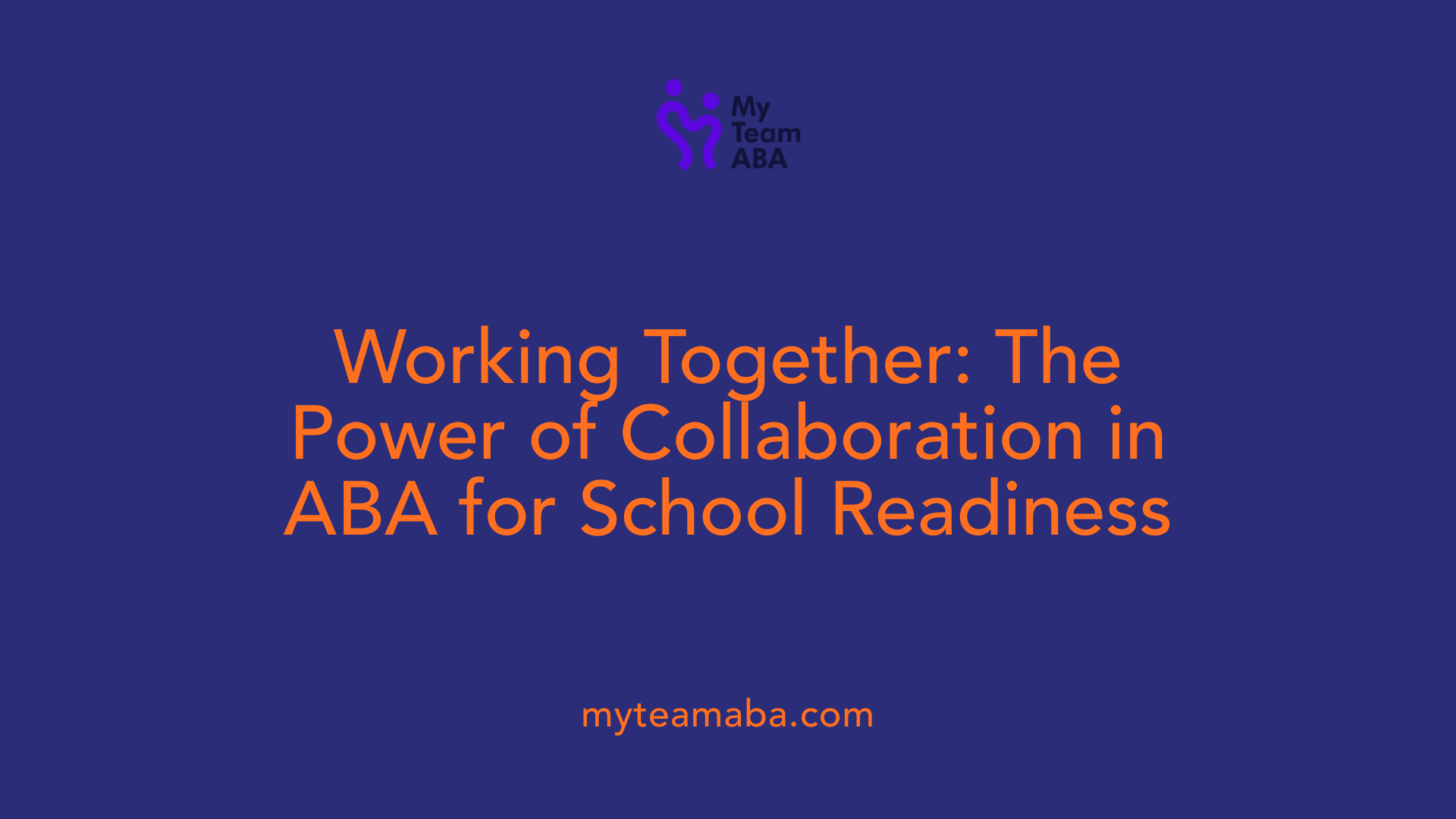 Partnerships with families and educators are central to the success of ABA therapy in preparing children for school. When therapists work closely with parents and teachers, they can ensure that skills learned during therapy are consistently reinforced and integrated across home and classroom environments. This collaboration helps children transition smoothly by maintaining uniform expectations and strategies, such as visual schedules and positive reinforcement techniques.
Partnerships with families and educators are central to the success of ABA therapy in preparing children for school. When therapists work closely with parents and teachers, they can ensure that skills learned during therapy are consistently reinforced and integrated across home and classroom environments. This collaboration helps children transition smoothly by maintaining uniform expectations and strategies, such as visual schedules and positive reinforcement techniques.
Consistency in training and intervention across settings also plays a vital role. By using similar routines, cues, and behavioral strategies in both therapy and school, children experience less confusion and anxiety. Regular communication between therapists, families, and educators allows for adjustments tailored to each child's evolving needs, creating a seamless support network.
The long-term benefits of ABA-based school readiness programs are significant. Children develop essential skills like communication, social interaction, and self-regulation, which foster independence and academic confidence. As children acquire these foundational abilities, they are more likely to succeed academically and socially, building resilience and continuing growth beyond their early school years.
| Aspect | Description | Additional Notes |
|---|---|---|
| Family & School Collaboration | Prevents skill regression and promotes consistency | Ongoing communication and training are vital |
| Cross-Setting Training | Uniform routines enhance understanding and reduce anxiety | Use of visual supports and social stories |
| Long-Term Impact | Better academic, social, and behavioral outcomes | Supports lifelong development |
In summary, collaborative efforts among families, educators, and therapists significantly enhance the effectiveness of ABA programs. These partnerships ensure that children build a robust foundation for school success, leading to better educational experiences and long-term positive development.
Unlocking Potential through Targeted Support
ABA therapy plays a vital role in equipping children with autism with the skills necessary for successful school integration. By systematically developing communication, social, emotional, and academic competencies, ABA fosters independence and confidence. Collaboration among therapists, families, and educators ensures that these skills translate into real-world success, ultimately unlocking each child's full potential for a future of learning and achievement.
References
- ABA Therapy and School Readiness - Inner Circle Autism Network
- How ABA Therapy Supports School Readiness for Child with Autism
- ABA Therapy and School Readiness | Shelton, Fairfield County (CT)
- Unit 1: Guide to Understanding ABA Therapy for School Readiness
- How ABA Therapy Prepares Children for School Success
- ABA School Readiness Therapy For Your Child - Step It Up ABA
- ABA Therapy and School Readiness - Inner Circle Autism Network
- How ABA Therapy Supports School Readiness for Child with Autism
